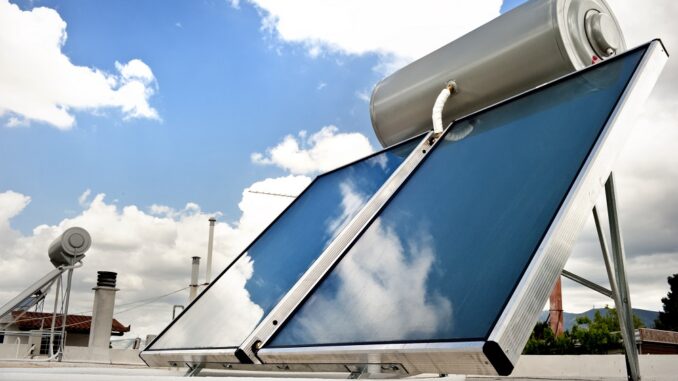
Solar water heaters are becoming increasingly popular. These things have come a long way around the world. They have become reasonably priced, and many individuals have begun to use solar water heaters for their water heating needs. Many well-known companies have begun producing (and marketing) solar water heaters. Solar water heaters are also available online through e-commerce platforms. The solar water heater includes a backup electric heating element for gloomy days. You can heat water by converting sunlight into solar power with a solar water heater.
What Is A Solar Water Heater?
A solar water heater is a system that uses solar energy (or energy from sunlight) to heat water. The Solar Water Heater Installation (ติดตั้งนำ้ร้อนพลังงานแสงอาทิตย์, which is the term in Thai) on a terrace or open space where it can get uninterrupted sunlight and the energy from the sun is then used to heat water and store it in an insulated tank. Because this system is not powered, it does not have an on/off switch. Solar water heaters use sunlight to heat water and store it in a storage tank throughout the day. When the sunlight is insufficient, you can use the hot water for an electric geyser, which uses electrical energy to heat the water to the necessary temperature from the solar water heater.
The Solar Water Heater Comes In Two Major Technologies
- ETC Solar Water Heater
- FPC Solar Water Heater
FPC (Flat Plate Collector) System:
A metal system is a flat plate collector system. They are made of an insulated iron box with toughened glass. The metal box features a layer of copper sheet that absorbs heat well. A black coating is applied to the copper sheet to aid heat absorption. The copper tube in the metal box is connected vertically and at the top and bottom to two horizontal copper pipes known as headers.
ETC (Evacuated Tube Collectors):
Glass is used in evacuated tube collector systems. It comprises two coaxial glass tubes and vertical tubes (coaxial); the air between the two coaxial tubes is removed to create a vacuum. Furthermore, the inner tube’s surface is coated to improve heat absorption and insulation.
Both types of water heaters are available with and without a pump. Those without pumps use the thermosyphon concept to move water from collectors to storage tanks mechanically. The pumpless system is excellent for home and small application users (since it is less expensive). Pumping systems are thus suitable for industrial applications.
Leave a Reply
You must be logged in to post a comment.